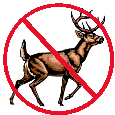United States Department of Agriculture, National Wildlife Research Center: Symposia

National Wildlife Research Center Repellents Conference 1995
Date of this Version
August 1995
Abstract
Understanding avian grit-use behavior and the physical characteristics of grit particles that influence their consumption by birds can aid in formulating safer granular pesticides. Potential routes of avian exposure to granular pesticides include birds perceiving the granules as a source of grit and picking them up intentionally. Pesticides formulated on granules are used extensively in agricultural production, and many are highly toxic to birds. Despite this, past formulation decisions have not included assessments of avian risks. A research program was initiated that included several phases of investigation. Natural grit-use patterns (the occurrence and amount of grit in gizzards, characteristics of individual grit particles) were evaluated for 22 bird species that commonly use cornfields when granular pesticides are applied. Experiments also were conducted with house sparrows (Passer domesticus) and northern bobwhite (Colinus virginianus) under controlled aviary/laboratory conditions to elucidate the effects of grit size, shape and surface texture, and color on grit use. Birds consuming small grit had > 5 times more particles in their gizzards than birds consuming large grit, and birds preferred angular/oblong grit over rounded/spherical grit. Yellow, green, and white grit was consumed most, whereas very little black and blue grit was used. Birds strongly preferred silica granules and were least likely to consume those made of gypsum or corncob. We also found that most grit is rapidly replaced in gizzards, usually within 5 days of ingestion, and that the integrity of granular pesticide carriers in gizzards differs greatly. Relative avian risks associated with various experimental granular pesticide formulations were assessed. Variables evaluated included pesticide concentration per granule, granule carrier type, and granule size and color. This review of recent research shows several factors that influence the potential for avian exposure to granular pesticides and how such factors can be used alone, or in combination, to reduce avian risks. Studies with other species and under different test conditions are needed to determine the general applicability of these results.

